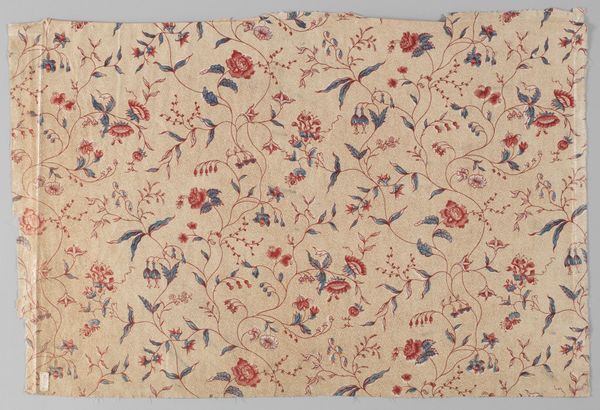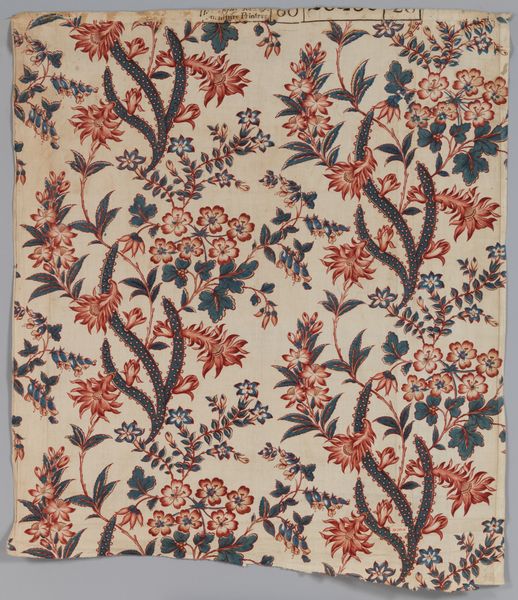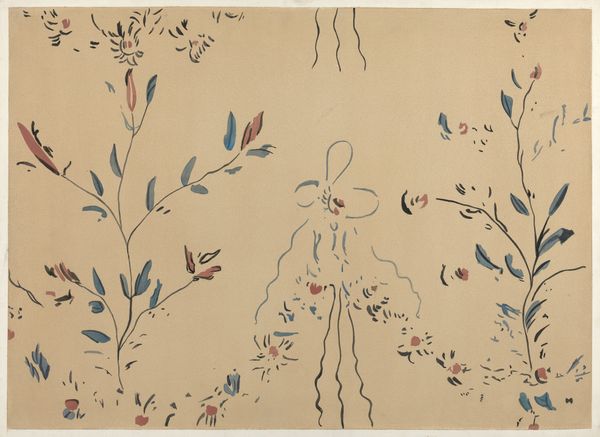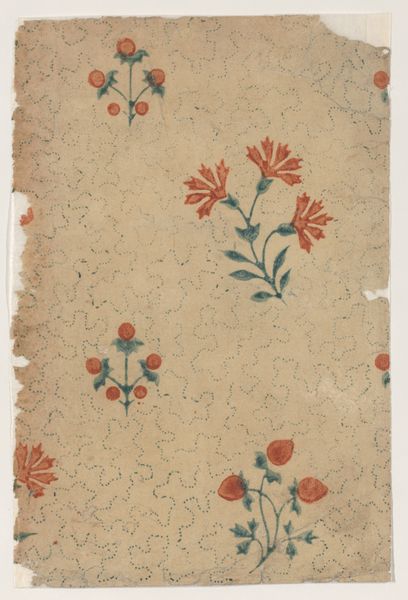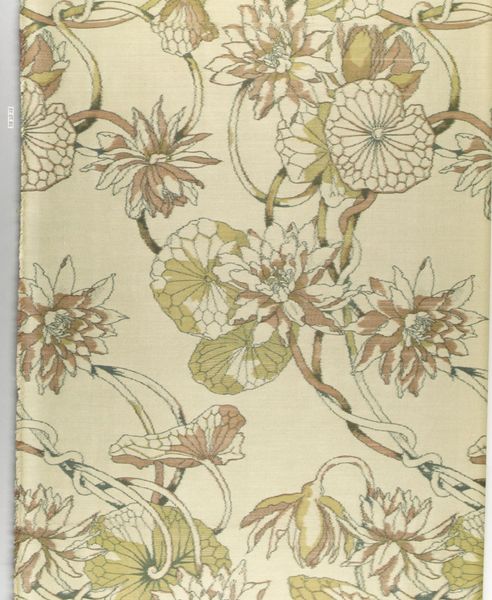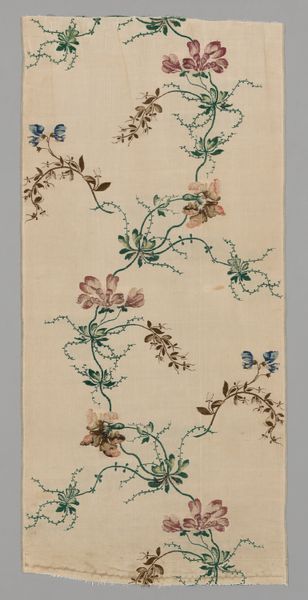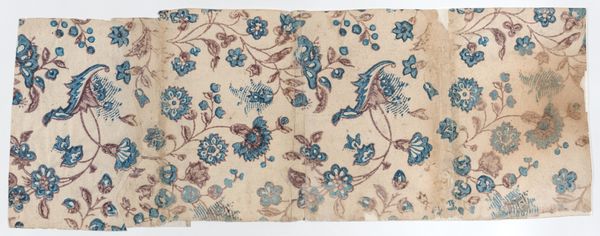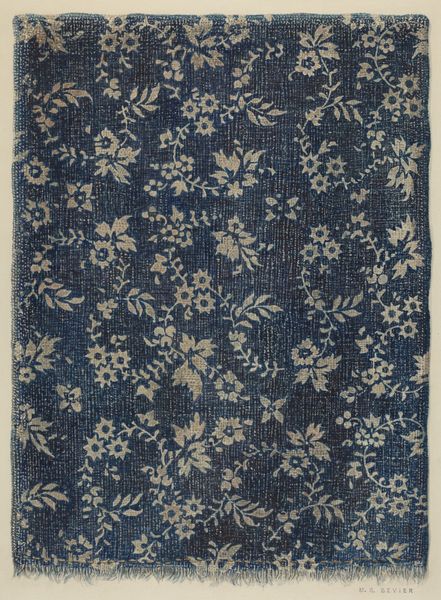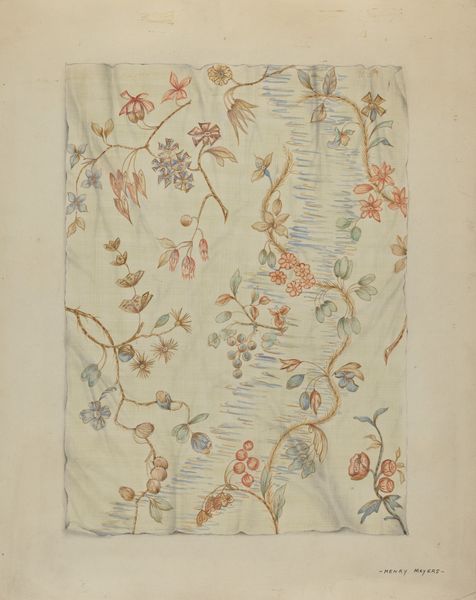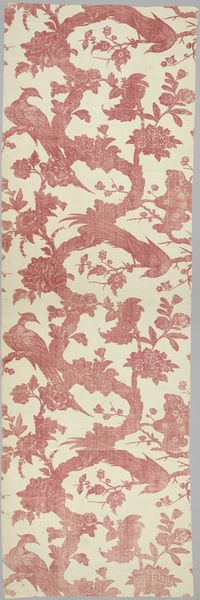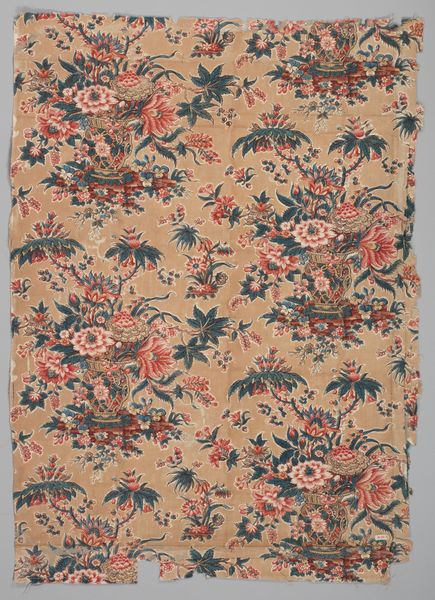
print, linocut, textile, woodcut
# print
#
linocut
#
landscape
#
bird
#
textile
#
flower
#
text
#
woodcut
#
genre-painting
#
decorative-art
#
imprinted textile
Dimensions: Overall: 51 x 25 1/2 in. (129.5 x 64.8 cm)
Copyright: Public Domain
Curator: This delicate textile piece, simply titled "Piece", dates back to between 1775 and 1785. It’s currently held here at the Metropolitan Museum of Art. The technique appears to be a combination of woodcut and linocut, using a resist dye to create a wonderfully detailed repeating scene of flora and fauna. Editor: It has such a tranquil, almost dreamlike quality. The limited palette of blues against the natural linen is soothing. I'm immediately drawn to the birds nestled amongst the foliage. It speaks of idealized nature and Arcadian calm. Curator: It does evoke those themes. Textiles like this one played a vital role in 18th-century society. Beyond mere function, they were potent signifiers of status and taste. Imagine the impact this pattern would have had in a dimly lit drawing-room, how it broadcasted affluence and connection to global trade. Editor: Absolutely, it represents the height of consumer culture in the 18th century. It prompts me to think about its production, the hands that created the woodcuts and meticulously imprinted these textiles, and how these trades often operated on colonial exploitations to acquire natural resources, such as linen and blue dye materials from India or South America. It embodies privilege but it’s also marked by the realities of that historical period. Curator: Precisely. This imagery served to define and uphold a particular lifestyle. Decorative art has always played this cultural and political role; consider, too, how pastoral themes have so often been mobilized by elite groups across different eras to signal their connections to nature. Editor: I keep circling back to the presence of birds here. These could represent so many ideas: freedom, natural harmony, or perhaps a subtle commentary on control, being delicately trapped within the pattern itself. These works require us to consider layers of intention and unconscious associations. It demands awareness of power dynamics at work within art's seemingly innocent surfaces. Curator: It's been insightful to unpack those intricacies. Seeing this "Piece" anew encourages reflections on not just artistry, but embedded values too. Editor: A lovely opportunity to consider the artwork not in isolation, but as an integrated aspect of cultural networks that shaped that time—and that continue shaping ours.
Comments
No comments
Be the first to comment and join the conversation on the ultimate creative platform.
